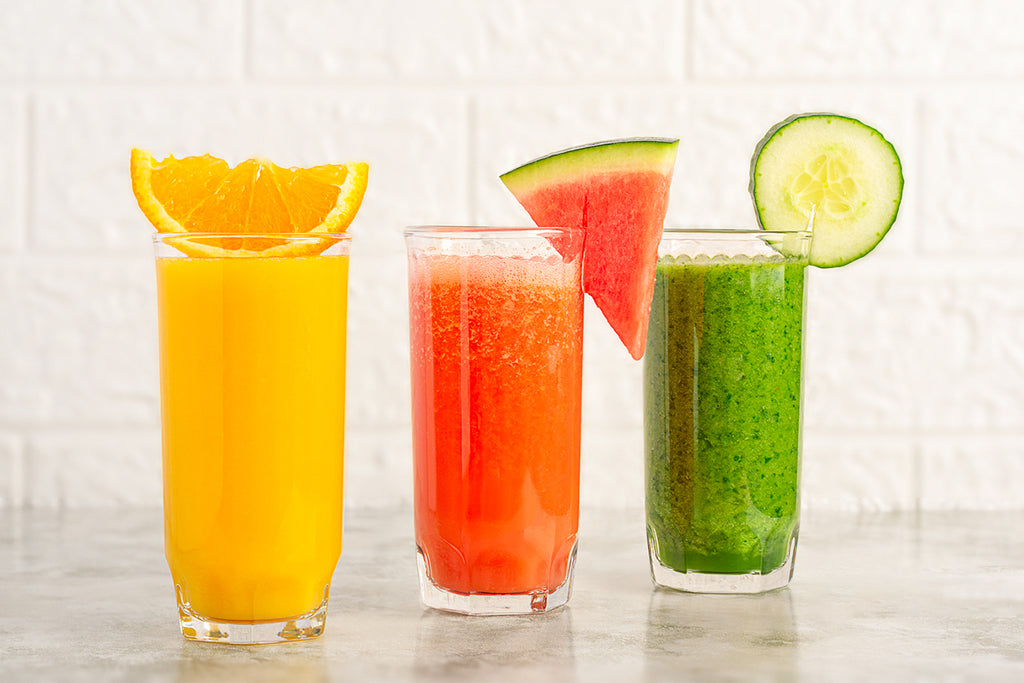
Drink juice as soon as possible after juicing. Over time, it begins to lose its nutritional value. Plus, it develops an interesting color when oxidized (especially apples). That doesn't mean it's bad, but the kids might find it funny. Preferably within 24 hours, but up to 2 days is also possible (but really not advisable). Remember, there are no preservatives in fresh juices. It can go bad quickly.
Prepare produce ahead of time for juicing. If you want to juice with breakfast or lunch, it's much easier to chop your produce the night before. You wash and chop everything...put it in a ziplock bag or storage container, put it in the freezer, and voila! It's ready to be juiced for breakfast or any time of the day when you're in a hurry. Once everything is ready, there's no excuse not to juice it! You should know that once you start cutting vegetables, they will start losing their nutrients. It's best cut right before juicing, but if you really need to save time, you may want to prep ahead of time.
Make it a good habit to clean your juicer immediately after using it. If you don't, the pulp and juices will become very sticky and it will be difficult to clean the machine. Therefore remember to wash it off shortly after juicing.
Using the pulp is a great way to save money and get extra nutrition. Stews are best for novice pulp users, but you can also use them in quiches, smoothies, oatmeal, or pancakes. Using pulp is very neat and easy. You also feel sort of good about no waste! If you don't want to use it in a recipe, just compost it into rich, healthy soil and place it in your garden.
Use a glass container when storing fresh juice. It is not good to store juice in plastic. Plastic can leach chemicals, and the natural compounds in juice don't do well in sealed plastic bottles. You could reuse a glass jar that you were going to throw away or separate them from leftover food in glass. Also, if not drinking right away, keep it in the refrigerator. Some people find that if they don't have a dark glass bottle, it's wise to wrap it in aluminum foil so it oxidizes more slowly.
It is not an easy task to make a fresh juice using some fruits and vegetables. Of course, you can use them all, but some don't work very well. Mushy fruits like bananas can't really be juiced. The berries are also mushy, but you can juice them - it just provides a lower juice yield than an apple or orange.
Mixing too many types of produce together can sometimes result in a juice that tastes weird. We all know those commercials for store-bought juices that contain a variety of produce. The truth is, when you drink fresh fruit juice, it doesn't taste all that great. We do not add any flavors. As a general rule, keep it at 3 and under for variety (plus it's easier).
Ginger is a fantastic addition to almost any juice. However, it is strong. Don't juice a lot of roots at first! Add just a little bit, less than an inch at first if it's very fresh. See how you like it and how your body responds to gauge how much to use next time you juice.

